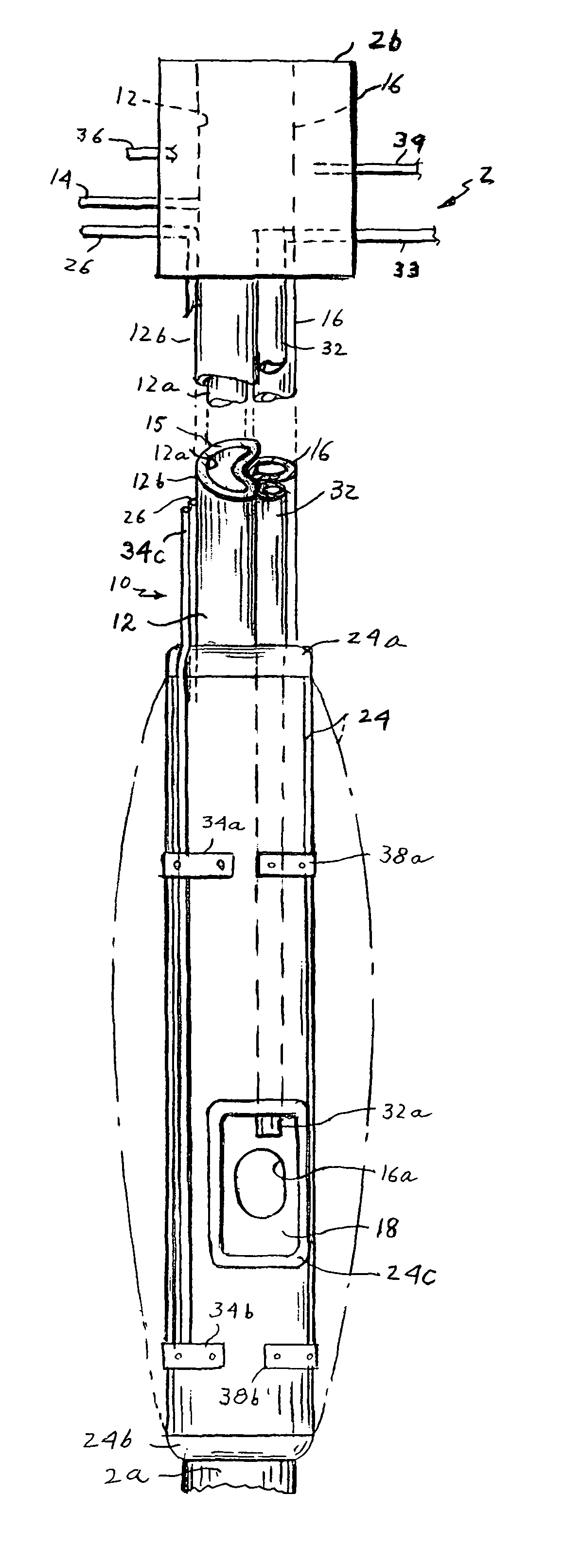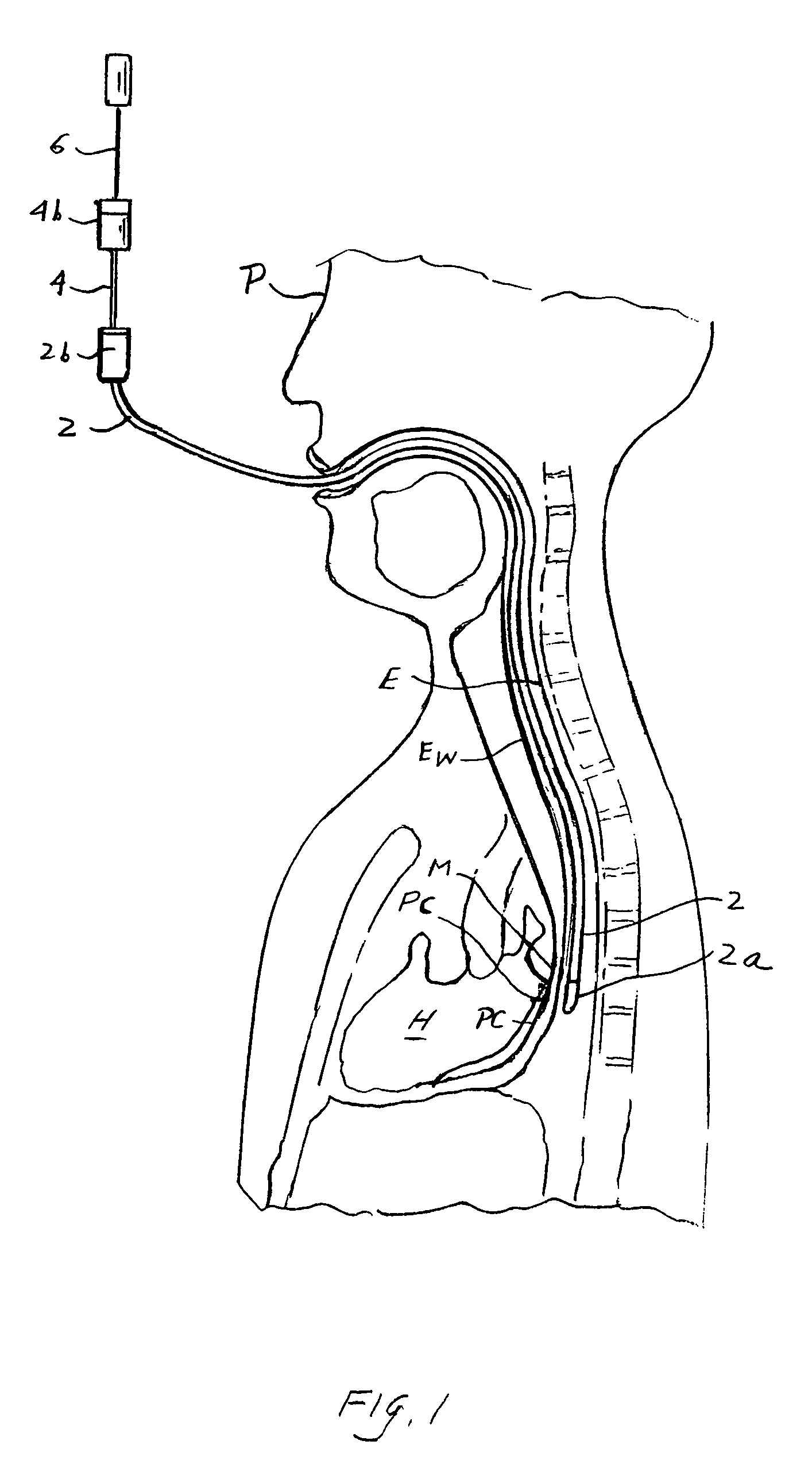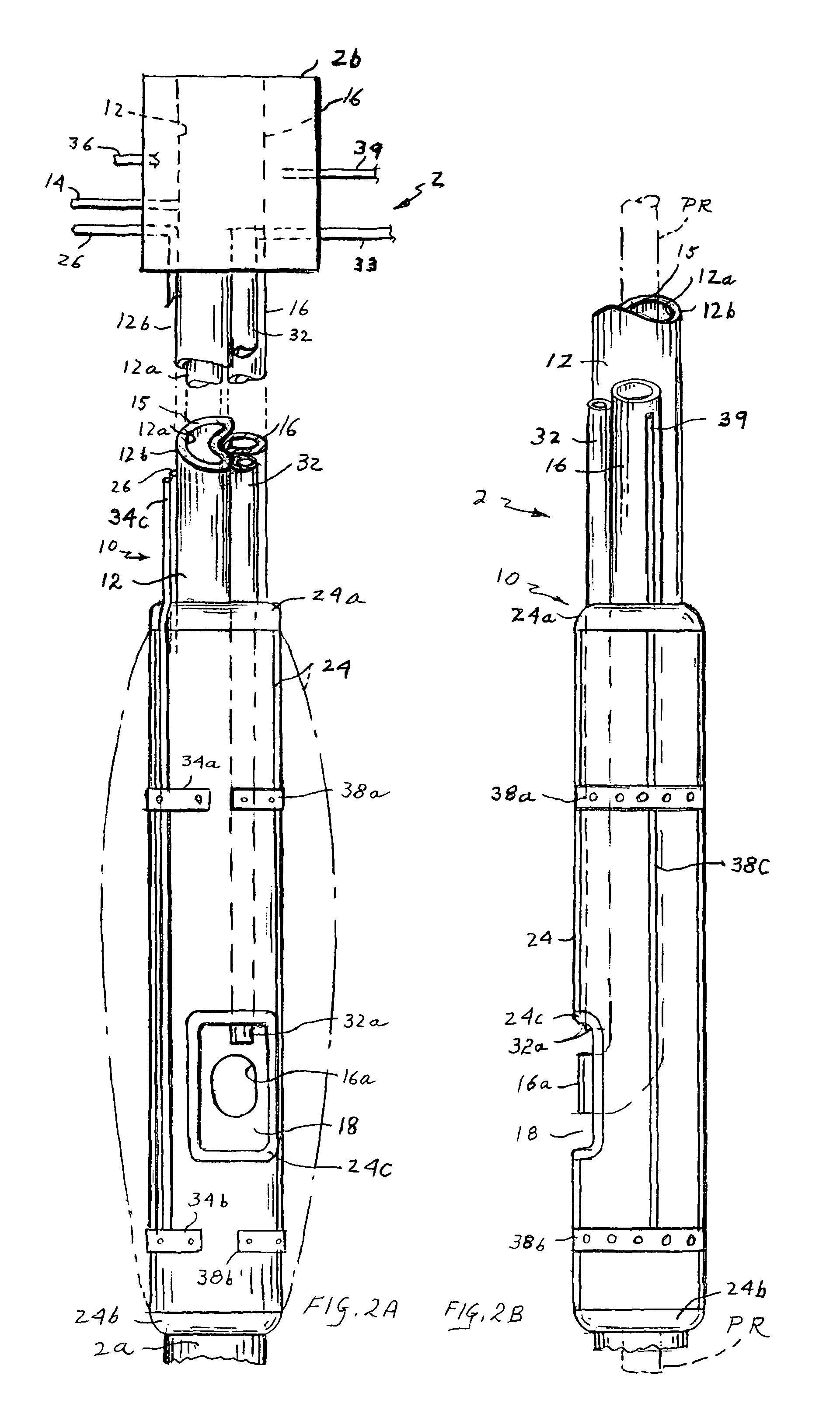There is no known non-invasive method that can directly measure the pressure in any chamber of the heart.
Unfortunately, there is no simple non-invasive way of directly measuring the
left atrial pressure.
Even with invasive measurement as in
pulmonary artery catheterization, the measured value reflects an indirect
estimation of the
left atrial pressure, and thus can be inaccurate in many instances.
Both techniques have their inherent side effects and complications.
The invasiveness of the current techniques limits the early implementation of a shunt closure especially in children, which is a curative intervention if done before irreversible vascular changes.
Other techniques use the
catheter transvascular approach with limited success due to lack of control and torque at the end of a long flexible, narrow
catheter used in the procedure.
The invasiveness of the open chest approach has limited the number of the Maze-like procedures used to radically prevent the
fibrillation impulses from being conducted to the ventricles.
Also, the
catheter-based approach is inaccurate, tedious,
time consuming (up to 12 hours) and not definitive in creating enough linear ablations to prevent impulse conduction.
The thoracoscopic approach is easier than the catheter-based transvascular approach but the side access to the posterior heart limits the
linearity of
ablation especially around the entrance of the pulmonary veins, which results in incomplete Maze, and recurrence of
disease.
The three known accesses to the heart namely, the open chest, the catheter-based transvascular, and the thoracoscopic approaches suffer from serious limitations and complications which, in turn, limit the therapeutic options for most of patients.
First, the risk of stopping the circulation with the possibility of causing marked decrease in tissue
perfusion or ischemic damage that may involve vital tissues like the brain, heart or kidneys.
Second, the risk of
embolization of dislodged tissues in the
aorta due to aortic manipulation including clamping and catheterization.
Third, opening the chest wall by
cutting through all
layers including the bony sternum with great force applied for rib retraction produces significant pain after the
surgery with
post surgical morbidity and, if severe, mortality.
Fourth, concomitant morbid states or age extremes may adversely increase all of the above-mentioned risks.
Again, these procedures have fundamental disadvantages.
For the transvascular approach to the treatment of heat defects, the disadvantages are inherent in the fact that the procedural tools have to go through and stay in a
blood vessel or a
cardiac chamber.
Thus, the tools can only be long, narrow, flexible catheters.
To reach the left heart, a septostomy opening is made in the
interatrial septum that decreases the control over the catheter and makes the manipulation of the catheter tip more difficult as the catheter has to pass through the narrow
right atrium and the small septostomy opening.
Another main limitation is the
caliber of the lumen of
peripheral vessels through which the catheter has to travel.
This is even a more
limiting factor in young children whose smaller vessels raise the risk of vessel injury that may be acute, such as intimal
dissection, or chronic such as major vascular obliteration and
fibrosis.
This may result in temporary acute or chronic
ischemia to the lower or upper extremities.
The small size of the vessels limits the size of catheters used in
ablation techniques.
That limitation gives rise to a lack of control and positionability due to the flexibility, increased distance and decreased force at the tip of such catheters.
The transvascular approach has a limited use in
surgical procedures like septa
defect repair by using an introductory device due to the above-mentioned limitations.
In addition to the above-mentioned limitations, the use of patches to close a septal defect using the transvascular approach with lack of distal force at the delivery tip may result in inadequate fixation of the patch to the defect plus the inability of patch repositioning after its application to the defect site.
The detachment of the patch from the defect site may lead to serious patch
embolization and failure of repair.
The disadvantages of such an approach can be considered.
The inaccessibility of the posterior aspect of the heart to the rigid scopes passed from either side of the heart, which is mandatory to create an atriostomy opening in the posterior aspect of the atrium, is a problem.
However, due to the narrow intercostals spaces in the anterior rib aspect, it is difficult to make such a stitch which makes the posterior aspect of the heart a difficult area to access.
Another limitation is the need to have a second
monitoring system to assess catheter position and convey accurate measurements as the procedure is not performed under direct
visual examination.
Such monitoring devices make the approach more complicated, may lack accurate precision, and may need to be invasive, e.g. removal of the
fourth rib for
visualization, or add a
potential risk of
ionizing radiation exposure with CT scanning, or be cumbersome and slow with MRI scanning, adding to the complexity of the technique.
Second, the limited windows between the ribs as a limiting border from above and below the access, the surrounding intercostals muscles and underlying vital structures including the lungs, pleura, nerves, and
great vessels can limit the access specially in young children with narrow intercostals spaces, and patients with deformities.
The need to access multiple intercostal openings to use a plurality of
thoracoscopes counteracts the main objective of the technique to be minimally invasive and may turn out to be more invasive and cause significant
tissue damage as it may also require removal of the
fourth rib.
The need to
deflate the
lung to widen the surgical field adds to the invasiveness and increases the complication potential of the procedure.
The inability to explore the posterior
mediastinum and related structures on the posterior aspect of the heart as the catheter is advanced from an anterior position makes procedures involving the posterior aspect of the heart less accessible as in
ablation around the entrance of the four pulmonary veins in the
left atrium.
Indeed, the thoracoscopic approach has been criticized lately by a number of studies that show numerous post-surgical complications.
 Login to View More
Login to View More  Login to View More
Login to View More 


